
The Piney Woods is a temperate coniferous forest terrestrial ecoregion in the Southern United States covering 54,400 square miles (141,000 km2) of East Texas, southern Arkansas, western Louisiana, and southeastern Oklahoma. These coniferous forests are dominated by several species of pine as well as hardwoods including hickory and oak. Historically the most dense part of this forest region was the Big Thicket though the lumber industry dramatically reduced the forest concentration in this area and throughout the Piney Woods during the 19th and 20th centuries. The World Wide Fund for Nature considers the Piney Woods to be one of the critically endangered ecoregions of the United States. The United States Environmental Protection Agency (EPA) defines most of this ecoregion as the South Central Plains.

The two-toed amphiuma is an aquatic salamander widely distributed in the southeastern United States. It is commonly, but incorrectly, called "congo snake", "conger eel" or the "blind eel".
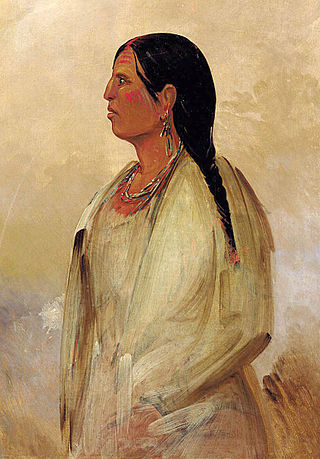
Indigenous peoples of the Southeastern Woodlands, Southeastern cultures, or Southeast Indians are an ethnographic classification for Native Americans who have traditionally inhabited the area now part of the Southeastern United States and the northeastern border of Mexico, that share common cultural traits. This classification is a part of the Eastern Woodlands. The concept of a southeastern cultural region was developed by anthropologists, beginning with Otis Mason and Franz Boas in 1887. The boundaries of the region are defined more by shared cultural traits than by geographic distinctions. Because the cultures gradually instead of abruptly shift into Plains, Prairie, or Northeastern Woodlands cultures, scholars do not always agree on the exact limits of the Southeastern Woodland culture region. Shawnee, Powhatan, Waco, Tawakoni, Tonkawa, Karankawa, Quapaw, and Mosopelea are usually seen as marginally southeastern and their traditional lands represent the borders of the cultural region.

Nerodia is a genus of nonvenomous colubrid snakes commonly referred to as water snakes due to their aquatic behavior. The genus includes nine species, all native to North America. Five of the species have recognized subspecies.
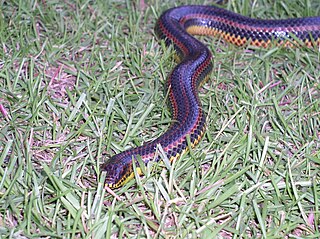
Farancia is a genus of colubrid snakes. It consists of two species, one commonly referred to as the rainbow snake and the other commonly referred to as the mud snake. Both species are native to the southeastern United States.
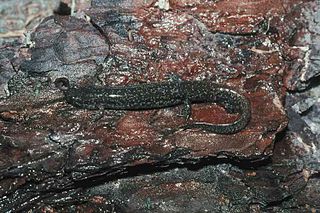
Holbrook's southern dusky salamander, previously known as just the southern dusky salamander, is a species of salamander endemic to the southeastern United States. Older sources often refer to it as the eared triton. Formerly abundant, it has precipitously declined since the 1960s.
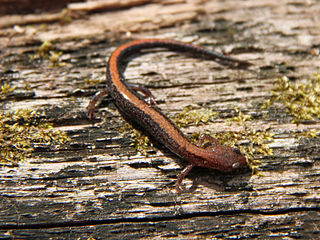
The southern red-backed salamander is a species of salamander endemic to the United States. It is found in four widely disjunct populations: one in central Louisiana; one in the Ouachita Mountains of Arkansas and Oklahoma; one in central Missouri; and one from southeastern Tennessee, to southwestern North Carolina, western Georgia, and eastern Alabama. It is sometimes referred to as the Georgia red-backed salamander or the Ouachita red-backed salamander. It was once considered a subspecies of the red-backed salamander, Plethodon cinereus.

The northern two-lined salamander is a species of salamander in the family Plethodontidae found in Canada and the United States. Its natural habitats are temperate forests, temperate shrubland, rivers, intermittent rivers, freshwater marshes, freshwater springs, arable land, and urban areas. It is more water-oriented than the related northern redback salamander, and can often be found in and around water such as rain puddles, streams, swamps, and damp stream beds, whereas the northern redback tends to be found in damp ground, but usually not near open water.

Chamberlain's dwarf salamander is a species of salamander in the family Plethodontidae, endemic to the United States. Its natural habitats are temperate forests, rivers, and freshwater marshes.
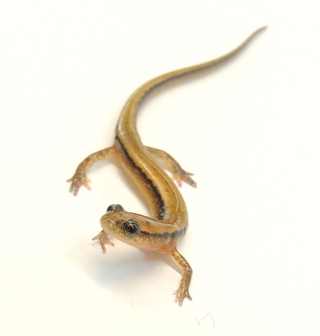
The southern two-lined salamander is a species of salamander in the family Plethodontidae, endemic to the United States. Its natural habitats are temperate forests, rivers, intermittent rivers, swamps, and freshwater springs.

The three-lined salamander is a species of salamander in the family Plethodontidae. It is endemic to the south-eastern United States. Like other Plethodontidae species, E. guttolineata captures prey via tongue projection.
David Mark Hillis is an American evolutionary biologist, and the Alfred W. Roark Centennial Professor of Biology at the University of Texas at Austin. He is best known for his studies of molecular evolution, phylogeny, and vertebrate systematics. He created the popular Hillis Plot depiction of the evolutionary tree of life.

The bog dwarf salamander is a species of salamander endemic to the southern United States.
Hillis's dwarf salamander is a species of salamander endemic to the southern United States.

The western dwarf salamander is species of salamander native to the southern United States.
Dwarf salamander may refer to five species of salamander in the genus Eurycea, all endemic to the United States and all of which were previously assigned to a single species :














